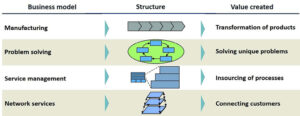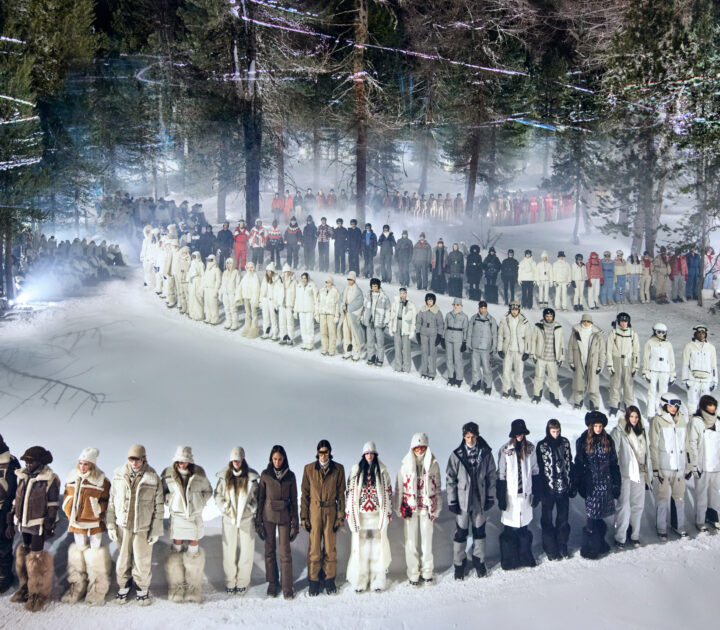Around 70 executives recently took part in a highly participative IMD Discovery Event to understand the concept of open innovation that is currently democratizing invention and product development, by opening them to the masses and creating more choice for consumers than ever before. Businesses that fail to embrace open innovation run the risk of being left behind.
Open innovation is a way to stay on top of the competition, reduce costs, spread risks and bring new products to the market more quickly. It takes place in two ways: by tapping into the creativity and brainpower of many through crowdsourcing, and by opening up a company’s internal ideas to the external community. For traditional companies, the biggest barrier to embracing the external community is pride – “We know our customers best.” Today, companies have to admit, “We don’t know everything.” Historically, LEGO depended on its marketers to make big bets on the products of the future, but in 2008 it changed its approach and launched “LEGO Ideas,” a crowdsourcing site on which anyone could submit suggestions. Fans then voted and LEGO produced limited editions of the best and most popular concepts with great success.
Often confidentiality is cited as a major barrier to open innovation, but it does not have to be. DARPA (the US Defense Advanced Research Projects Agency), responsible for developing emerging technologies for the military, wanted to make a new amphibious infantry vehicle from conception to manufacture in one-fifth of the typical timeframe. So in 2013, it issued a challenge to all Americans to build FANG – Fast, Adaptive, Next-Generation Ground Vehicle. How did DARPA effectively leverage non-experts to contribute meaningfully to a highly technical military challenge? It lowered the barriers to participation and democratized innovation by:
- Clearly spelling out the objectives and the specifications.
- Allowing people to work autonomously or to form teams.
- Dividing a complex problem into sub-systems. The vehicle was designed through three competitions for (1) mobility and drivetrain; 2) chassis and structure; and (3) the whole vehicle.
- Giving registered participants access to META, DARPA’s library of digitally rendered vehicle components and mechanical parts.
- Making design and simulation software available so that components could be manipulated to create new parts. Collaboration tools allowed team members to work together virtually on a shared design. The participants received feedback on their design, which they could resubmit.
- Offering a cash prize of $4 million. Intrinsic motivation stemmed from a sense of contributing to nation building, making an impact, prestige and recognition.
The above example raises a number of questions for managers: How are their companies positioned in terms of innovation? Where do they need to be? Are they willing to make basic investments to seed innovation in novel ways? How can internal employees as well as external partners be motivated?
A time for deconstruction
Five out of the top six companies by market capitalization in 2016 were tech companies: Apple, Alphabet (Google’s parent), Amazon, Microsoft and Facebook; Exxon Mobil was the only non-tech company. Given the explosive growth of highly innovative, networked businesses, Professor Haanaes deconstructed company types, from traditional manufacturers to network orchestrators, through the lens of business models to understand how value is created.
- Manufacturing: No longer the most important part of many economies, manufacturing as a proportion of GDP is in decline globally, driven by the shift from a traditional machine age economy to a more service-intensive information age economy. The question for asset builders is how to sell more than just the product. Many manufacturers, particularly in the business-to-business (B2B) segment, are moving to capture value by providing solutions. For example, General Electric is going from selling aircraft engines to selling usage, or “power by the hour.” The manufacturing business model, typically built around value chains, is becoming much more collaborative and agile in the quest to become innovative.
- Problem solving: This is the business of having competences that are of huge value to a customer who has to solve unique problems, as provided by doctors, architects or lawyers, for example. It is characterized by information asymmetry, high stake irreversible solutions and a large variation in outcomes. In contrast to manufacturing, the value of solving a problem is independent of the cost of solving it. Therefore, reputation is critical. But digitization is changing the nature of problem solving, partly in terms of efficiency and partly because other business models can do the same.
- Service management: Thirty years ago a company did everything itself. That has changed with the practice of insourcing, i.e. bringing in a service. Insourcers grow by building scale. They try to find many customers with exactly the same needs so they can standardize the service. Customization in insourcing is expensive because it creates complexity. Digitization is making the service management business model more efficient. For instance, when IBM realized that its services were becoming commoditized, it started transforming to become an analytics company.
- Network services: A unique characteristic of a network is that every new member (of the right type) increases the value for all; the wrong members destroy value and have to be subsidized by the rest. This business model is about selecting the right members and growing their numbers, thus creating additional value at lower cost. Networks thrive in layers and the value increases when different networks link up, for example, travel, payment, logistics. Networks strive to build stickiness to prevent customer volatility. Since networks still need an asset builder, the question for manufacturing companies is how to create their own networks with suppliers, partners and customers. There are not many B2B networks and huge battles will be fought in the B2B space.
Delving deeper into new knowledge-intensive networked business models,Professor Yu questioned whether the rise of companies like Uber, Facebook, Alibaba and Airbnb is a fundamental shift or a fad. Can businesses afford to ignore these trends?
The key enablers that helped propel these types of companies include escalating computing power, mobile technology, smartphone penetration, plummeting prices and enhanced connectivity – human-to-human, human-to-machine and machine-to-machine – through different types of interfaces. There has always been a need for certain services. What has changed is the expectations and behavior of people – another vital enabler of the network effect. The notion of trust has also changed with the concept of user reviews and ratings.
All these factors have led to the emergence of networked platforms, especially in the B2C domain, across different verticals and at an unprecedented scale, resulting in the professionalization of diverse fragmented industries. Whereas start-ups with networked business models are forging ahead, traditional companies have responded with the typical excuses: “This is not our core business,” “We don’t have the capabilities,” or “We cannot spend this kind of cash.” Instead, the discussion needs to revolve around the strategic choices and consequences. Should we develop new capabilities in-house or should we build partnerships? Or should we outsource entirely?
“It makes no sense for an asset builder, let’s say a telecom company, to compete head on with Google or Facebook. A core strength of the telecom company is the billing system that charges people by the minute/second. If the billing system can be repurposed for socially targeted big brands like Coca-Cola, far greater value can be generated by creating APIs (application programming interfaces) for them – a potential new business. A combination of entrepreneurship and leveraging unique assets and capabilities makes it viable.”
– Howard Yu
CASE STUDY ON THE HEALTHCARE INDUSTRY
An analysis of the healthcare industry sheds light on how hospital systems might reorganize if intelligent machines become as ubiquitous as smartphones in the next five years.
With medical knowledge doubling every 3.5 years, finding new ways to make evidence-based decisions has never been more critical. Watson™ is a powerful cognitive technology developed by IBM that processes information more like a human than a computer, by understanding natural language, generating hypotheses based on evidence, and learning along the way. In 2012, Memorial Sloan Kettering Cancer Center (MSKCC) and IBM collaborated to develop a powerful tool – Watson for Oncology. It combined the computational power of Watson with MSKCC’s decades of longitudinal data, clinical knowledge, molecular and genomic data, cancer case histories, and the latest research to create an evidence-based decision support system for oncologists. Watson for Oncology was launched in 2014 and free access was provided to hospitals worldwide. Participating hospitals had a madate to share their data fully, which would make the tool more intelligent.
Taking the US as an example, Watson for Oncology has great potential in the highly regulated healthcare industry (a classic problem solver and an asset builder). There are three tiers of hospitals: Tier 1 – world-class, with top doctors; Tier 2 – regional; and Tier 3 – community, often with limited resources. Hospitals in each tier have the opportunity to reconfigure their business model to compete better. For example, Watson for Oncology could lead to a decoupling of diagnosis and treatment, which are typically vertically integrated and housed under one roof. It is also possible to save on expensive doctors and invest in areas that have more impact for cancer patients, such as nursing and after-treatment services.
By specializing in a disease class, a new provider could do the job – at scale, more efficiently and at a lower cost. Specialization involves streamlining the type of patient, changing the workflow, investing in specific equipment, standardizing procedures and becoming outcome driven.
Expertise and human intuition are expensive and time-consuming and the outcome is not predictable. The codification of human knowledge to enable data-based decision making is the way forward. Watson for Oncology has gained traction in countries such as Thailand, Malaysia, Korea and India, many of which lack oncologists and specialist centers. The problem- solving industry will eventually become a network, with the ability to move data around as its fundamental gel. Although privacy concerns surrounding patient data will need to be addressed by regulation and technology – such as block chains and encryption – Watson for Oncology is poised to change the architecture of healthcare.
An alternative organizational design to support innovation
As technology and the nature of the workforce continue to evolve, organization design scholars are grappling with an outlier in terms of organizational design – a hierarchy-less organization without bosses, more frequently seen in innovative companies. Professor Narayanan argues that this kind of organization has existed since prehistoric times when hunter-gatherer communities had a two-layered structure comprising a tribe head, chosen based on hunting skills, and the rest of the community. The next evolutionary step came with agriculture, which modified the way humans organized themselves. Thus hierarchies came about. Hierarchy accomplishes task division, task allocation, motivation (rewards, monitoring) and coordination (flow of information). But it also causes problems such as silos and red tape and, most importantly, it separates decision makers from where the knowledge resides. Are there credible alternatives to hierarchies?
Given that hierarchy can be a roadblock to creativity, innovation is easier in a smaller company. Research has shown that the number of people with whom one can maintain a meaningful relationship – whether in a hunter-gatherer society or on Facebook – is 150, also known as the Dunbar number. This means that humans will be most effective in organizations of around 150 that implicitly embed safety, trust, a shared purpose and the ability to have an impact. At this size, there are fewer intermediaries and much innovation occurs serendipitously through informal conversations. In traditional companies, creative outposts are often formed to enable innovation by highly empowered talents. Organizations therefore need to strive to facilitate the inclusion of hierarchy-less forms within the overall organizational design (see Table 1).
| Form of organization |
Traditional “hierarchical” firm | “Boss-less” firm |
| Task division | By managers with the formal authority to set priorities | By employees deciding which tasks are important |
| Task allocation | By managers with the formal authority to make staffing decisions | Self-selection by employees |
| Reward provision | Salaries, bonuses and promotions determined by managers
Emphasis on extrinsic incentives and monitoring |
Compensation decisions based on peer ranking
Emphasis on both intrinsic and extrinsic motivators |
| Information provision | Formal communication channels controlled by managers | Lateral and informal communication channels |
| Enforcing solutions and resolving problems | By managers based on formal authority | By employees based on peer-to-peer agreement and informal authority based on expertise, status, etc. |
Table 1: Traditional vs. boss-less: What can we incorporate into our existing organization design?
“One of the reasons there is lower creativity in the presence of a leader is that your subordinates are trying to second-guess what you are thinking. Just the absence of the physical presence of the leader can sometimes change the quality of ideas in a brainstorming session. You might have to step back as a leader and do less than you normally do.”
– Jay Narayanan
Takeaways
As new forces of global competition – in the form of agile start-ups with innovative business models, technological advances and evolving regulation – are unleashed, companies that depend on tried and tested structures and strategies and set incremental targets based on past performance are in real danger. Many traditional asset builders and service providers are responding to these competitive challenges by undertaking innovation in different ways. A life sciences company might innovate with a university, an FMCG company with key account customers, while others collaborate with suppliers. DARPA, as we saw, extended the boundary of open innovation to tap into the wisdom of individual inventors. While partnering with high-tech players to seed innovation, traditional companies have to retain the ability to capture value, bearing in mind the following:
- Owning the customer interface is critical, particularly for B2B companies. Since they supply components along the value chain, traditionally they have tended not to focus much on the end customer. By embedding sensors into their products, for example, asset builders can bypass Amazon and have a direct channel to the customer.
- The terms of data ownership and data sharing in partnerships should be clarified. The range of data gathered can subsequently be used for different types of analytics.
- Embrace technology to release resources to focus on the customer experience, thus redefining the core value proposition.
- Small and deep data based on human psychology and unarticulated needs can provide superior insights. For example, GE designed the adventure series of MRI scanners (Pirate Adventure, Coral City Adventure) for children’s hospitals by placing industrial design engineers in the hospital to live the journey of the patient and understand the child’s psychology. No big data analytics can provide this insight. The empathetic lens unleashes creativity.
- Explore options beyond partnering with the big players. It might be more effective to acquire or work with smaller players such as start-ups or university offshoots that are more agile and flexible with their business model.
- Above all, keep abreast of the technology roadmap.
Discovery Events are exclusively available to members of IMD’s Corporate Learning Network. To find out more, go to www.imd.org/cln




